Eating Food in Season
Photos by Forrest Anderson
Really? Besides tracking our weight, dealing with allergies and trying to cut down our food bill, we now have to worry about eating food in season? What’s the point? After all, we can get fresh produce year round.
Turns out that eating food in season can help with all of those concerns as well as protecting the environment and improving our health. And it’s pretty easy.
Having lived in several countries where most fresh food was grown locally or regionally, I learned to look forward to the changes of the seasons and the accompanying succession of foods that appeared in the local markets in spring, summer and fall. Spring meant large mounds of strawberries, summer mountains of watermelons, and stacks of cabbages in the fall.
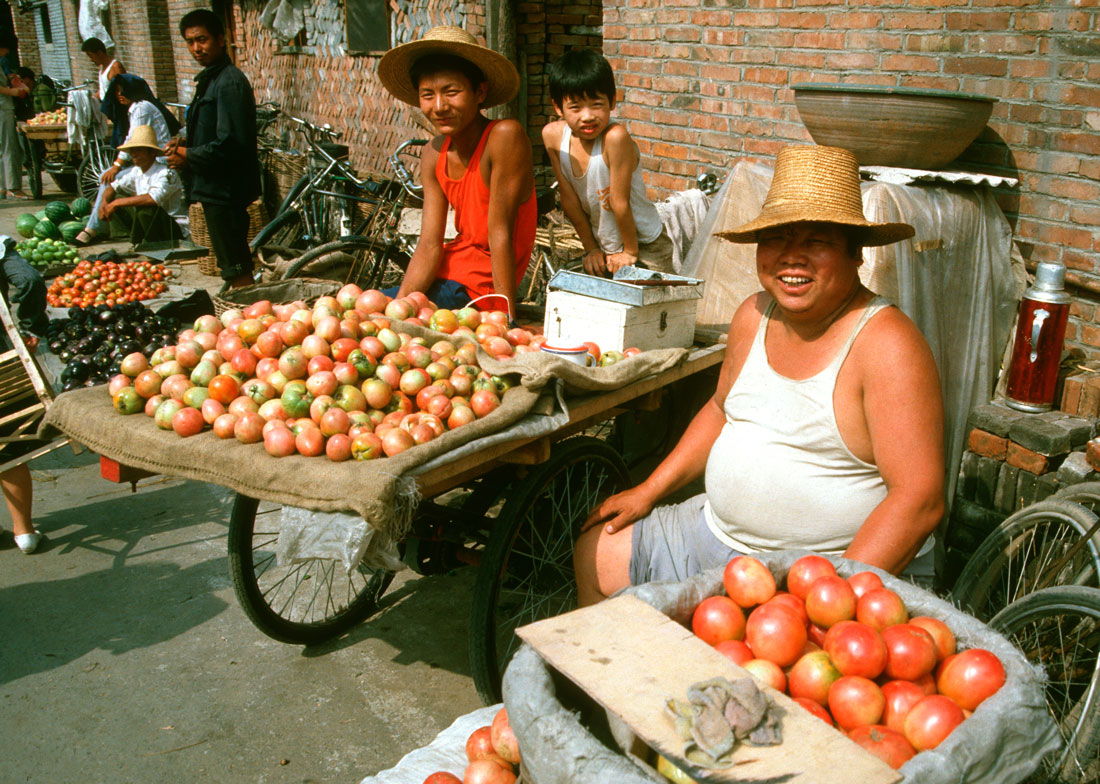
A summer vegetable and fruit market in Asia.
Don’t get me wrong – these economies had the significant down side that a variety of fresh fruits and vegetables weren’t always available in winter. For all the criticism of our modern food production and distribution system, it is one of the wonders of our world in the variety of choices it provides year round. However, there still is a great deal to be said for consciously choosing locally grown fresh fruits and vegetables picked ripe and eaten around the time they are harvested. Here are the benefits:
- There’s no better and easier way to enjoy delicious tasting food than using fresh, high-quality ingredients. Food picked when it is ripe is at the peak of its flavor. Think blueberries, watermelons and corn-on-the-cob in the summer and crisp apples and just-harvested potatoes in the fall. Fresh flavorful produce needs little preparation because its natural taste is so superb. That’s a key reason why many high-end restaurants use in-season produce from local farms. The difference between the quality of food at such a restaurant and one that sources food with little regard to seasons is significant. You don’t have to be a gourmet chef to create top-quality meals if you buy fresh local produce in season. Eating seasonally also encourages us to cook at home, which many nutritionists say is the best strategy for better health and weight control. It forces us to take control of what we put in our bodies, what oil we cook with, how much sugar we add and whether we use processed foods. Cooking also brings families together.
- It’s better for our health. When I am able to get high quality produce in season, I’m naturally drawn to eating more nutritionally because it tastes so good. Some research also indicates that the nutritional content of food can vary depending on the season in which it is grown. Plants picked ripe and eaten promptly without being transported long distances have higher levels of healthy antioxidants. Food grown out of season can require more fertilizers and pesticides. There is some evidence that eating foods when they are in season provides weight-loss benefits and that changing our diet seasonally makes us less likely to develop food intolerances. Because many fresh foods now are available year round, consumers get in the habit of buying the same products every week, depriving themselves of the benefits of eating a variety of produce throughout the year. Abundant leafy greens in the spring help us lose extra pounds after eating heavier foods in the winter. Summer foods provide extra beta-carotenes and other carotenoids that help protect us against sun damage. In the summer, eating foods with high water content such as berries, cucumber and watermelon helps us stay hydrated. Carbohydrates such as peaches, melon and corn are sources of energy when we are more active in the summer. In the fall and winter, warming foods such as vegetable soups, stews, grains and nuts help us stay warm. Apples, which have fiber and pectin, help us digest the bulkier foods we are eating for warmth. Citrus foods with their large doses of vitamin C protect us from bacteria and viruses that hit in the coldest months. A 2018 study on rats indicated that when they were fed out of season foods, they experienced adverse effects on their circadian rhythms, fat burning, level of insulin resistance, and other metabolic functions. The study has implications for diabetes and obesity. More research is needed on the topic, but it could have important implications in a country in which 44 million people are clinically obese compared with 30 million ten years ago, and obesity is a risk factor for heart disease, stroke, type 2 diabetes, and breast, prostrate and colon cancers. Consciously eating food in season focuses us on consuming healthy ingredients that help stabilize blood-sugar levels, keep arteries clearer, and improve overall health. Food transported a long distance often has been genetically modified not to improve its taste or nutritional value but its longevity and appearance. It is picked before it is ripe and refrigerated, which causes it to lose flavor and texture. Sometimes it is coated in pesticides, waxes, irradiation and preservatives to maintain its fresh appearance. Various studies indicate that it loses a third or more of its nutritional content during transportation from a long way away. At its destination, it sometimes has to be heated in a hothouse to ripen it, further reducing its flavor.
- Eating locally or regionally grown food is better for the environment, because foods grown locally require less energy and resources to transport. Transporting it to stores adds to its carbon footprint. The estimated annual cost of environmental damage in the United States from industrial-scale farming is $34.7 billion. The average distance that produce is shipped in the United States is almost 1,500 miles. This means that 400 gallons of gas is used per person per year to ship food – 17 percent of our national energy use. Four to seven times more fuel is required and five to seventeen times more carbon dioxide is emitted to produce conventional food than for locally grown food. If every American ate one meal a week with local or regionally produced ingredients, the United States would cut its oil consumption by 1.1 million barrels of oil weekly. Some countries that produce food for global markets have fairly relaxed regulations for pesticides, herbicides, fungicides and soil contamination and some agricultural areas have been shown to have high heavy metal and other toxic contaminates from industry in the areas. Two-thirds of the United States’ vegetables are grown in California’s Imperial Valley, fed by water diverted from the Colorado River which has to be desalinized to protect the soil there. The valley was declared a national disaster area in 2012, 2014 and 2015 because of drought.
- Eating local foods in season is easier on your budget because when foods are in season, there typically is a greater supply and the price drops. Produce grown a long way away in off seasons is more expensive because of shipping costs and sometimes the added cost of growing it in a greenhouse.
- Eating local foods in season helps your community. Buying such food helps support local farmers and thus maintains farmland and green spaces in your community as well as supporting the local economy. It supports farmers who provide local jobs. Research indicates that for every hundred dollars you spend at a farmers’ market, $62 remains in the local economy and $99 in the state.
How can we tell what foods are in season?
Many people are so accustomed to buying strawberries in the winter that they aren’t sure what is in season and what isn’t or even what eating food in season means. With an increasingly urbanized population, we are less aware of when and where various foods are produced. Of 2,000 people polled in the United Kingdom, just five percent knew when blackberries were ripe, and 4 percent knew when plums are ripe. At the same time, 86 percent said they believed that eating seasonal food was important and that they shopped for food in season.
Here’s a quick rundown of common foods and when they are in season:
Spring – Asparagus, beets, celery, greens, peas, radishes, scallions, cherries, strawberries.

Summer – Green beans, cucumbers, garlic, peppers, summer squash, corn, tomatoes, zucchini, blueberries, blackberries, melons, nectarines, peaches, plums, pears.
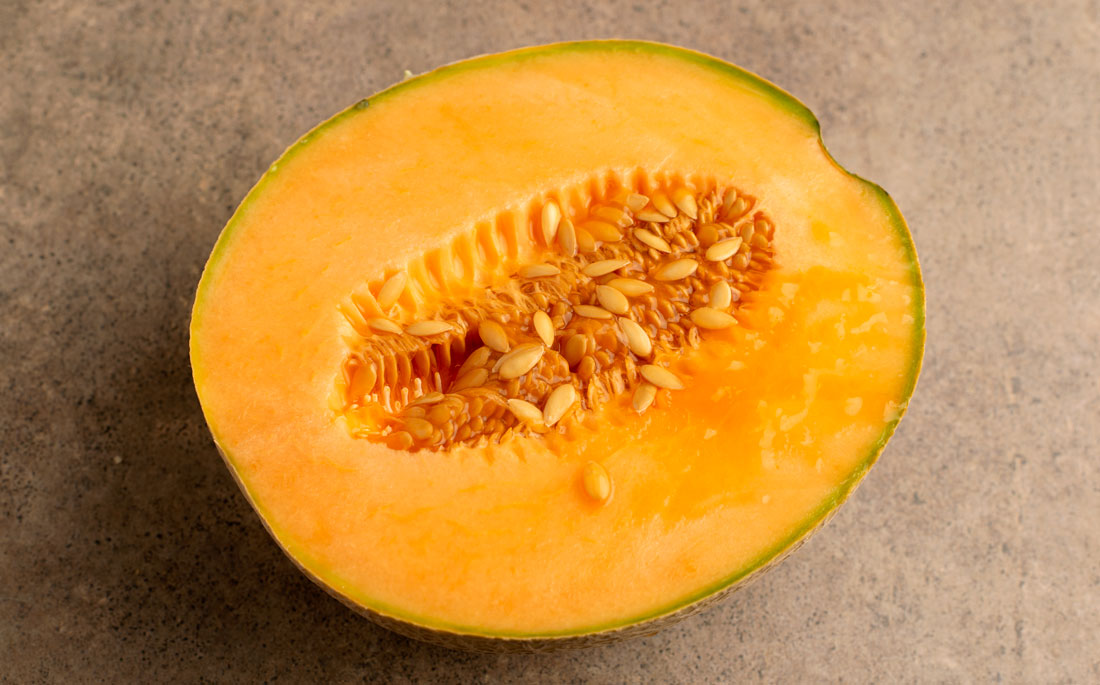
Fall – Green beans, broccoli, cabbage, carrots, cauliflower, greens, onions, potatoes, winter squash, apples.

Winter – cabbage, carrots, celery, greens, leeks, onions, radishes, potatoes, pumpkins, winter squash, apples, citrus fruit.
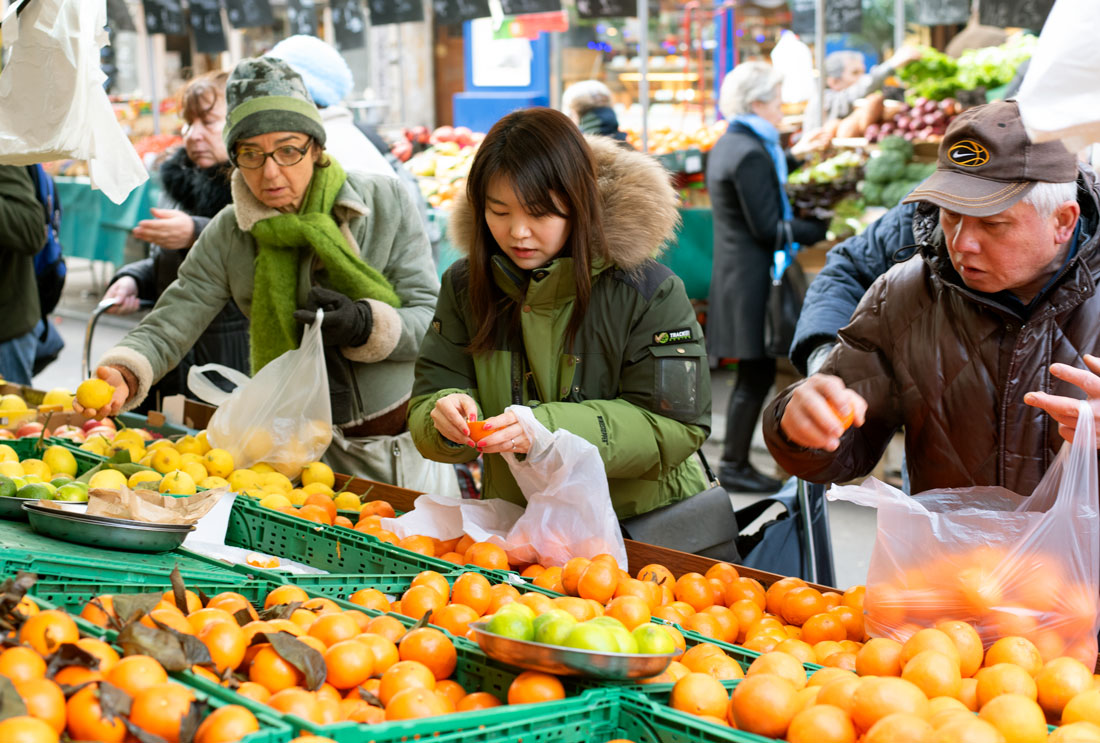
If it’s important to eat food in season, why does our food system provide so much out-of-season food?
Not eating food in season is a fairly recent phenomenon. Some of the world’s most stable cultures, such as some Native American cultures, held that shifting one’s diet according to the seasons helped people stay healthy and maintain their natural environment. Our food production and distribution system developed into a global industry only within the past century. Before the 1920s, all but a privileged few who could afford to have food sent from long distances ate seasonally and adapted their diets according to food that was locally available. In the past century, the U.S. and global food distribution systems moved away from being mostly small local farms to big business. At the end of World War I, chain stores became popular because they could undersell smaller stores. Individual food distributors formed retail cooperatives to get the benefits of chain-style pricing. Supermarkets became prominent in the 1930s. As the U.S. highway system grew, food distribution systems grew up with warehouses, factories, trucking fleets and commercial retailers. Increased use of technology transformed small farms into large production facilities. Federal agencies began to manage and sustain the productivity of the American food distribution system. In other regions such as Latin America, similar trends developed until food distribution there now is dominated by large distributors and chains.
The system has helped resolve hunger on a wide scale, so that we now produce enough food globally to feed the world. However, it still has a number of serious problems. The two most prominent are uneven distribution and waste. Distribution is uneven because many poor people can’t afford to buy food and enough food is not distributed to some areas. Distribution problems cause food to be wasted because it can’t get to those who need it, while it is wasted in advanced economies when the wealthy throw away excess food on their plates. These problems in turn tax the capacity of landfills.
Encouraging efficient methods of growing food locally can help moderate some of the distribution and environmental problems and fill in some of the blanks in the global distribution system. People can distribute local food surplus to those who need it rather than it going to waste. This week, a friend of mine sent out a group message that she had surplus basil in her garden and asked if anyone would be interested in it. I took her up on it, and quickly made enough pesto from the bunch she gave me for 40 small pizzas. I froze the pesto in small containers for future use. It’s hard to imagine how this half hour of work, which provided the basis for 20 meals, was less efficient than a run to the grocery store to buy pesto that was canned probably hundreds of miles away.
Eating foods in season paradoxically can encourage people to eat a wider variety of nutritious foods. Globally, we typically eat only 30 species of food, while people 100 years ago ate many more varieties, because our industrial agricultural system relies primarily on a few varieties of fruits and vegetables that produce large yields and can be preserved while being transported long distances and stored. These types are not necessarily the most flavorful and nutritious. One study indicated that we’d have to eat eight oranges to get the same amount of vitamin A that our grandparents got from one orange.
Within the species we do eat, we eat fewer varieties than people ate a century ago. In 1903, commercial seed growers offered almost 500 types of lettuce. Local farmers can make flavor a high priority when deciding which vegetable and fruit varieties to grow.
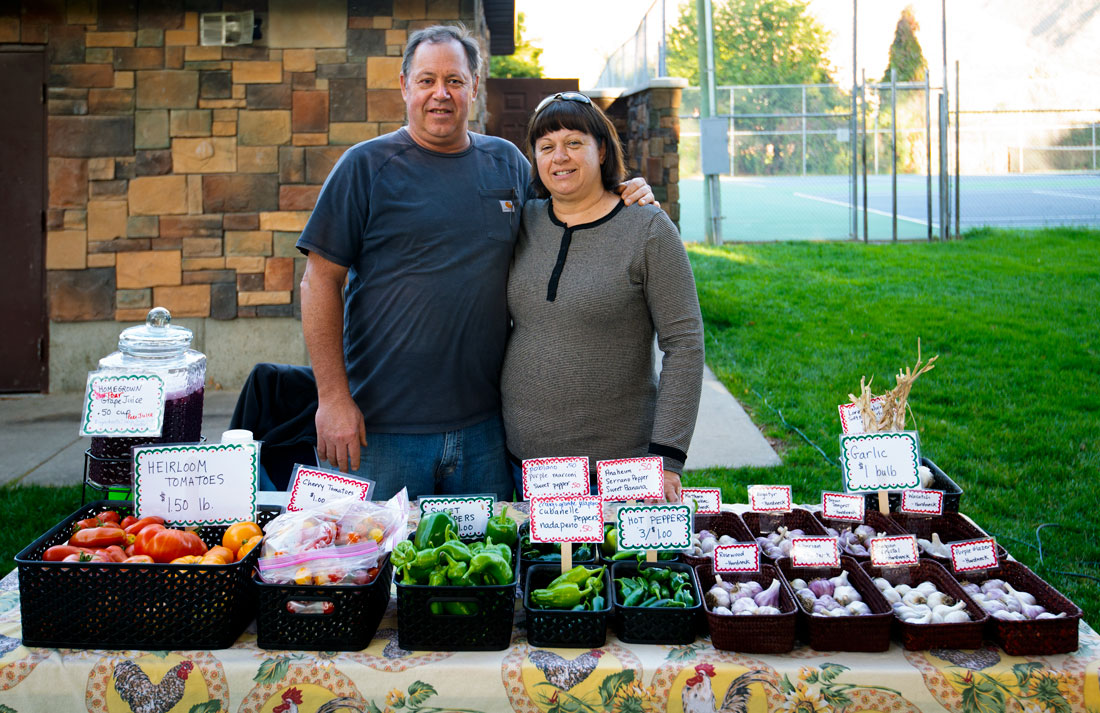
David and Donna Ferguson grow and offer varieties of produce at the farmer's market in Mapleton, Utah, that are not typically available at grocery stores. The Fergusons grow the produce they sell on just a little over an acre of land. They sell it once a week all summer at the market. They are typical of small farmers who participate in the food production system on the local level.
Farmers' markets are sometimes considered expensive, but studies of four different regions showed that produce at them was the same price or less expensive than it was in grocery stores, and a 2010 study in Vermont indicated that organic produce at farmers’ markets was 40 percent less expensive than comparable organic produce at a grocery store.
Some modern food production, including of foods we consider healthy, is damaging to the environment. Our system gives us a consistent year round supply of fresh produce, but it can have a high environmental cost in water and land use for the areas where it is produced. Eating more seasonal food is just one element of dietary and farming changes that can have environmental and health benefits. Among others are reducing overconsumption and meat consumption.
A major change is taking place on farms in the United States and some other countries as farmers are working to solve some of these problems. For many decades, most American food has come from large industrial-scale farms growing the same crops year after year. This uses enormous amounts of chemical pesticides and fertilizers that damage soils, water and air and contribute to climate change. This system ultimately is unsustainable because it degrades the resources upon which it depends.
Many farmers are moving toward a more sustainable farming system that includes farms of all sizes producing a diverse range of foods adapted to local conditions and regional markets. This approach is not a return to the past. It uses state-of-the-art, science-based practices that maximize productivity and profit while minimizing environmental damage.
Evidence gathered from studying these farms is debunking the idea that large-scale industrial farming is more profitable than more sustainable farming that treats workers fairly, has a mutually beneficial relationship with the surrounding environment and community and includes good long-term stewardship of natural resources. The latest scientific research indicates that sustainable practices can outperform conventional monoculture in yield and profitability.
This approach, called agroecology, includes building and maintaining healthy soil, managing water wisely, minimizing air, water and climate pollution and promoting biodiversity. It works with nature to avoid damaging the environment without sacrificing productivity and profitability.
Part of this process is organic farming, a system of sustainability practices that have been codified into specific certification standards by the U.S. Department of Agriculture. Farms complying with these standards are allowed to label their food USDA organic.
Organic standards allow some practices that are not optimally sustainable and not all farmers who use sustainable practices want to pursue USDA certification. However, food labeled organic is more likely to be sustainably produced than conventionally grown food.
Among sustainable practices are rotating crops, planting a variety and growing a mix of crops to create healthier soil and improved pest control. Other strategies are reducing plowing and inserting seeds in undisturbed soil to reduce erosion and improve soil health, using integrated pest management that minimizes use of chemical pesticides, planting cover crops in off-seasons to reduce soil erosion and weeds without using herbicides, integrating crop and animal production, planting trees and shrubs to provide shade and shelter that protects plants, animals and water resources and provides additional income, and managing the entire landscape to control erosion, reduce nutrient runoff, and support pollinators and other biodiversity. The key in this case is not simplicity but diversification.
Hundreds of scientists have called for increased public investment in research on a broad range of crop varieties. US farm policy continues to direct public resources into subsidizing overproduction of corn and other commodity crops, but agricultural legislation also is including provisions to support more organic farming, make it easier for fruit and vegetable farmers to qualify for crop insurance, and help farmers adopt more sustainable practices.
Sustainable food aims to minimizes its contribution to climate changethroughout the production process, including the use of energy in transportation and storage.
Sustainable farmers use livestock husbandry techniques that protect the animals’ health, providing pasture grazing and allowing animals to move freely to reduce the suffering that animals are subject to as part of food production. It avoids the use of non-essential antibiotics or growth promotion supplements.
Part of the sustainable food movement is toward more plant-based foods and fewer processed ingredients. Sustainable food brands pay workers a living wage and provide safe, hygienic and fair working conditions. They support local and regional economies that offer jobs and build stronger communities.
What can we do?
Eating seasonal food doesn’t have to be a 100 percent commitment. Just eating seasonal local produce during the peak growing season in our area can provide us with a wider variety of foods, enable us to get the most flavorful and healthiest food we can and help balance our diets, wallets, the earth’s resources and our community’s economy. It helps support farmers who use sustainable methods of food production.

You don't have to live in a rural area to eat good produce in season. Ted's Veg at the Borough Market in London offers locally grown, chemical-free vegetables that provide city dwellers with in-season produce. There are similar urban markets in many cities.
It doesn’t mean we shouldn’t buy imported food not widely grown in our own area, such as pineapples and bananas. Many areas with short growing seasons are dependent on the global food distribution system to provide food in the winter. Buying imported food also makes an important contribution to developing countries' economies. However, even a modest transition to more local and seasonal foods can have a positive impact on the planet and our health. That doesn’t mean we have to go organic. Many small family farms can’t afford to go through organic certification but still follow healthy growing practices and provide food in season.
As with all strategies, moderation and awareness of the impact that our food buying and consumption choices have on the world and on our health can help mitigate the excesses of our global food system. Eating food in season is about enjoying your food, not abstaining from foods you like. But if you’re interested in the quality of your food and aware of when certain ingredients are at their best, you will naturally eat more local foods in season.
You don’t necessarily have to shop at a farmers’ market to get good local produce. More and more supermarkets carry local in-season produce, often labeled as such.
Prices are one way to determine what is in season. When fruit goes up in price, it is a signal that it’s out of season. When something specific is on sale, like potatoes in the fall, it’s a good indicator that it is in season. Another way to tell is quality. When produce doesn’t look or taste as good as what was available a few weeks earlier, it likely is going out of season.
Most of us eat some produce in season by default because it is part of our culture. We have apple desserts in the fall and eat watermelon at picnics in the summer. Eating seasonally needs to fit into our lifestyle and cultural and social expectations to be sustainable.
A great way to get exercise, start a new hobby and eat seasonal food is to grow a garden or a few vegetables or fruits in pots. We also can support plant life by planting a bee friendly garden and can reduce our food waste by composting it and using the compost to fertilize our garden.
Visiting U-pick farms to harvest fruit yourself for a fraction of the typical grocery store cost is another way to eat seasonally.
Most of us base our food decisions on convenience, taste and price, but sustainable food also considers how food is packaged. An advantage of shopping at farmers’ markets is that we can take our own bag and cut down on the problem of mass plastic packaging of fresh food. Even recycling plastic is energy intensive, and sending it to a landfill means it will take many generations to degrade.
We also can reduce the amount of meat we eat, which helps both our budget and the environment because large-scale animal agriculture has one of the largest carbon footprints. This can be as easy as using smaller cuts of meat, slicing it thinly and seasoning it more richly as well as eating more vegetables. Cutting down on meat can enable us to spend a little extra on sustainably raised vegetables and fruits.
Check out these related items

Green Thumbometer
Gardening can be a good way to relieve stress and get fresh air during the coronavirus shutdown. Here are a new tool and tips.

Beyond Recipes
Beyond the world of recipe-based cooking is an adventurous, affordable, easy way of cooking that combines the basics with variety.
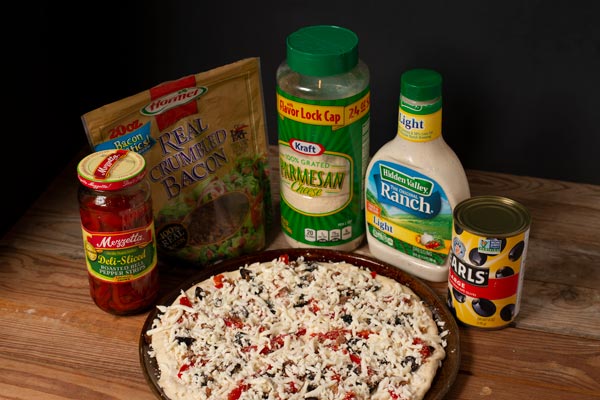
Store What You Eat Guidelines
The pandemic has been a major wake-up call about planning, home storage and preparation for crises. Here are some guidelines.

Anatomy of an Enchilada
The wide variety of Mexican dishes can obscure their common underlying spice and preparation base.

Cozy Soups
The cold weather is over, but there's still room for an occasional bowl of soup. Here are some favorite recipes.

Favorite Sauces for Latin Dishes
Some of the best Latin foods can be made with easy commercial or homemade sauces that work in a variety of dishes.
